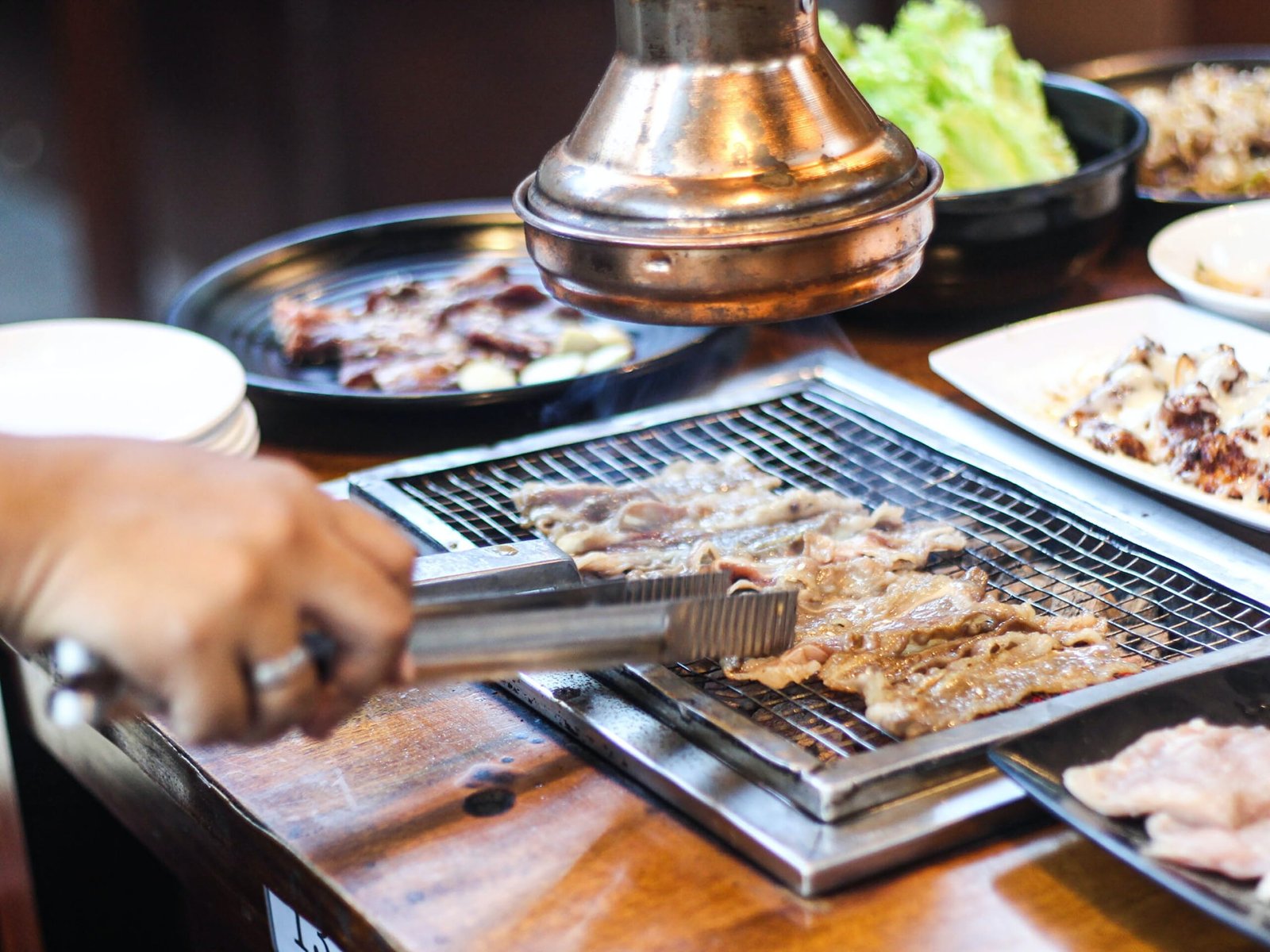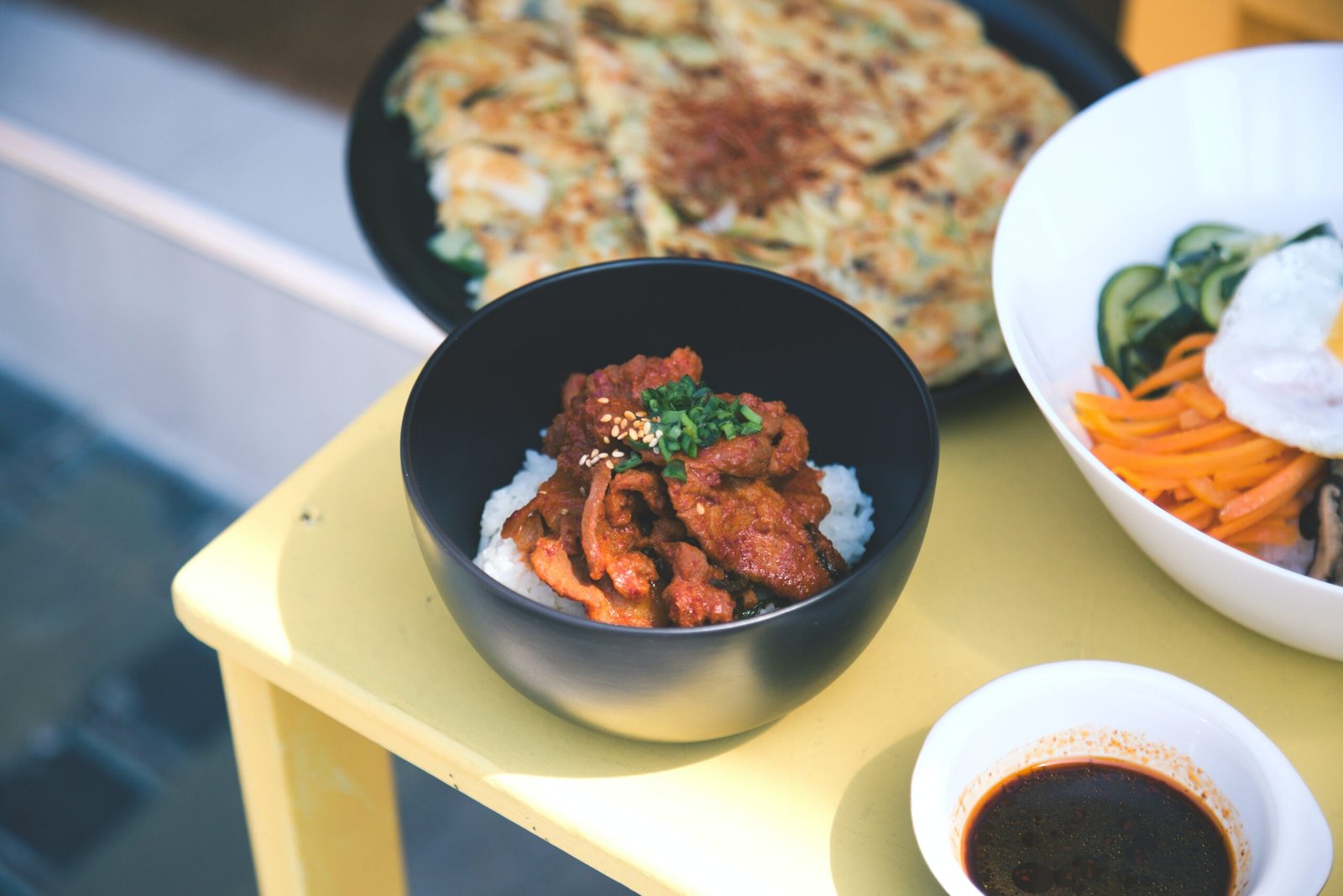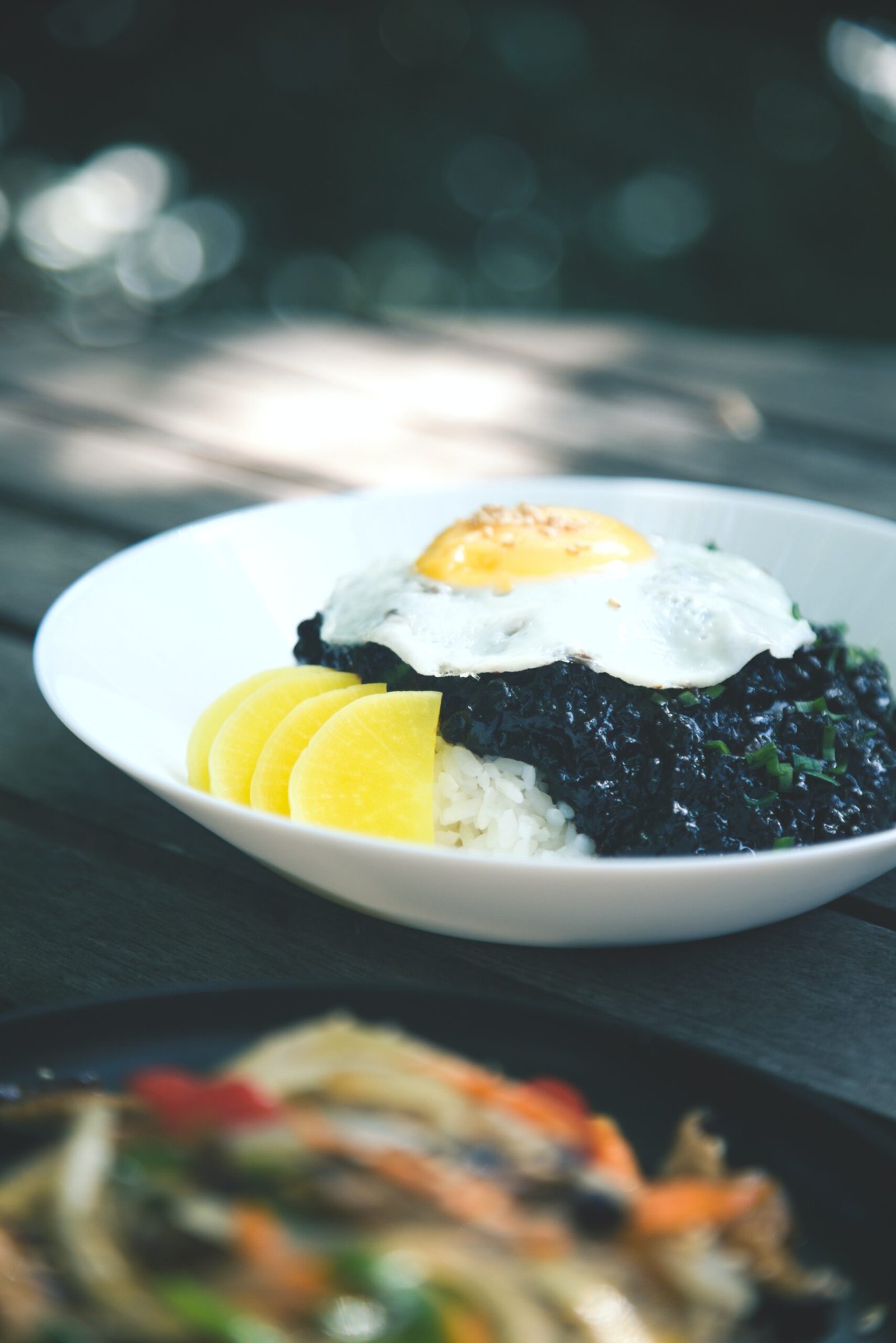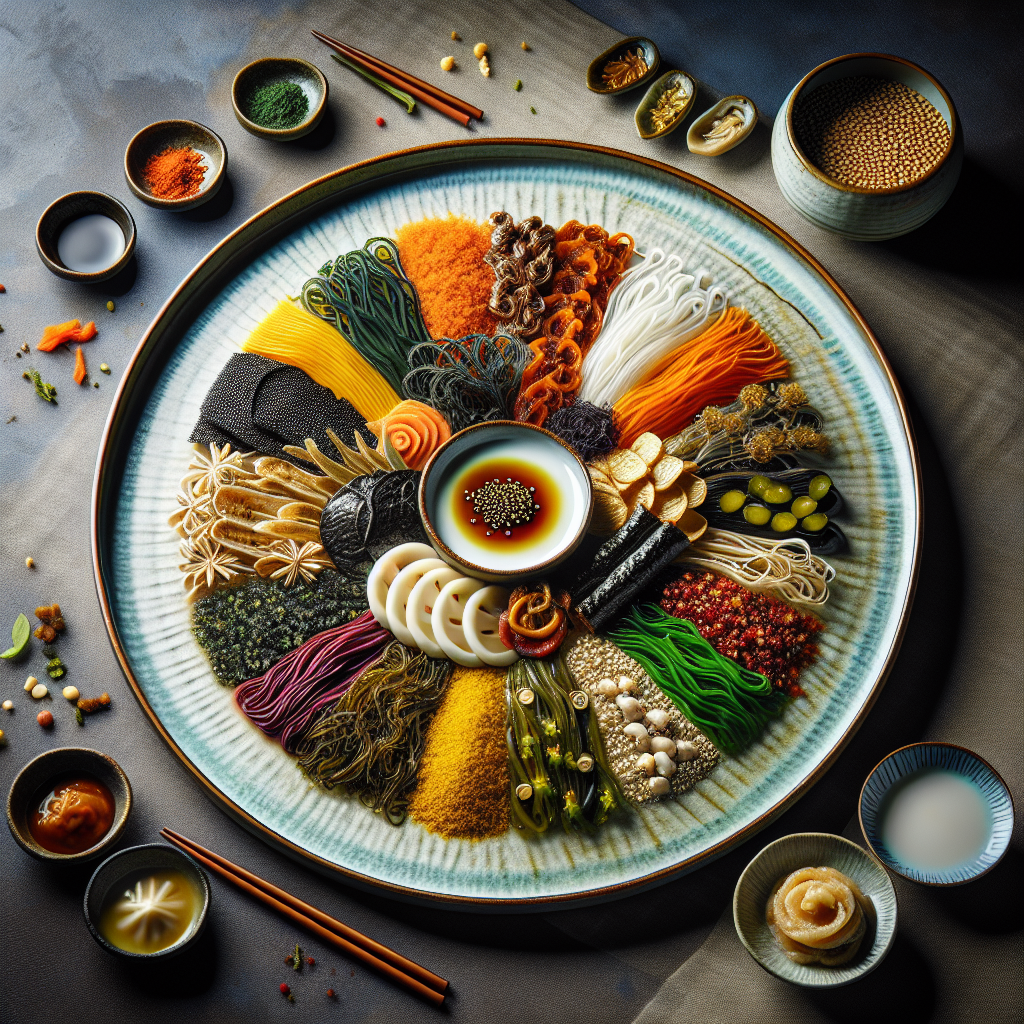In the world of Korean cooking, the concept of “umami” takes center stage, tantalizing our taste buds and leaving us craving for more. From the savory and rich flavors of traditional dishes like kimchi and bulgogi to the delicate balance of fermented ingredients, Korean cuisine embraces umami like no other. Exploring the deep, complex flavors that emerge from the combination of ingredients and cooking techniques, Korean cooking unveils a whole new dimension of taste that leaves you wanting to dig deeper into this culinary wonderland.

The Meaning of Umami
Defining Umami
Umami, often referred to as the fifth taste, is a word of Japanese origin that translates to “pleasant savory taste.” It is a unique flavor that adds depth and richness to dishes, making them more satisfying and enjoyable. Umami is characterized by its ability to enhance other tastes, giving a pleasant and satisfying sensation in the mouth. While umami is often associated with Japanese cuisine, it is also a prominent feature in Korean cooking, where it is utilized in various ingredients, seasonings, and cooking techniques.
The Discovery of Umami
Umami was first identified and named by the Japanese scientist Kikunae Ikeda in 1908. Ikeda discovered that there was a distinct taste sensation present in certain foods, such as seaweed and bonito flakes, that couldn’t be classified as sweet, sour, salty, or bitter. Through his research, Ikeda isolated the compound responsible for this taste, which he named “umami.” He later identified glutamate as the key component responsible for the umami taste. This discovery revolutionized the understanding of taste and led to the recognition of umami as a fundamental taste.
Umami in Korean Cuisine
Korean cuisine is known for its bold flavors and unique combinations of ingredients. The concept of umami is deeply ingrained in Korean cooking, as it plays a crucial role in enhancing the overall taste profile of dishes. From fermented foods to savory seasonings and cooking techniques, umami is ever-present in Korean cuisine, contributing to the distinct and irresistible flavors that Korean food is renowned for.
Umami Taste in Korean Cooking
Umami-rich Ingredients
Korean cuisine utilizes a wide range of umami-rich ingredients to create complex flavors. Garlic, ginger, and onions are frequently used aromatics that infuse dishes with deep umami flavors. Additionally, mushrooms like shiitake and oyster mushrooms are highly prized for their natural umami taste. These ingredients form the foundation of many Korean dishes, providing a robust and satisfying flavor base.
Fermented Foods
Fermentation is a traditional Korean culinary technique that not only preserves food but also enhances its flavor and nutritional value. Fermented foods, such as kimchi, doenjang (fermented soybean paste), and gochujang (fermented red pepper paste), are staples in Korean cuisine. The fermentation process not only creates complex and tangy flavors but also boosts the umami content of these foods. These fermented delicacies are essential for imparting depth and richness to a wide range of Korean dishes.
Seasonings and Sauces
Korean cuisine is well-known for its flavorful and diverse range of seasonings and sauces, many of which are packed with umami. Soy sauce, a staple in Korean cooking, adds a savory umami taste to various dishes. Fish sauce, made from fermented anchovies, contributes a distinct umami flavor to Korean recipes. Oyster sauce, made from oysters that have been simmered and thickened, is another umami-rich condiment commonly used in Korean cuisine. Sesame oil is also a popular seasoning that adds its unique umami essence to dishes.
Cooking Techniques
Korean cooking techniques are skillfully designed to enhance the umami flavors in food. Slow simmering and braising are common methods used in Korean cuisine to extract the maximum umami from ingredients. The long cooking time allows flavors to develop and intensify, resulting in rich and deeply satisfying dishes. Fermentation and aging, as mentioned earlier, are techniques that heighten the umami taste in many Korean foods. Grilling and barbecuing impart a smoky and charred umami flavor, while smoking and drying are methods used to preserve food while intensifying its umami qualities.

Popular Umami Ingredients in Korean Cooking
Soy Sauce
Soy sauce, or ganjang in Korean, is a staple seasoning in Korean cuisine that adds a wonderful umami taste to a wide variety of dishes. Made from fermented soybeans, soy sauce plays a crucial role in balancing flavors and enhancing the overall richness of a dish. Its savory depth is often used as a foundation for marinades, sauces, and stir-fries.
Red Pepper Paste (Gochujang)
Gochujang, a fermented red pepper paste, is one of the most iconic ingredients in Korean cooking. It boasts a rich, spicy, and slightly sweet flavor profile, with a noticeable umami kick. Gochujang adds depth and complexity to dishes, making it a popular choice for marinades, stews, and dipping sauces. Its versatility and umami-packed taste have made it a beloved ingredient in Korean cuisine.
Anchovies
Anchovies are a pantry staple in Korean kitchens, widely used as a seasoning and a source of umami. These small fish are packed with flavor, adding a delicious briny taste to various dishes. Anchovies are often used to make a flavorful broth or stock, which serves as a base for soups, stews, and braised dishes. The umami-rich broth derived from anchovies contributes to the depth and complexity of many Korean recipes.
Seaweed (Kelp and Dashima)
Seaweed, specifically kelp (or kombu) and dashima, is prized for its umami taste and nutritional properties in Korean cuisine. When dried, these seaweeds possess a concentrated umami flavor that enhances the taste of broths, stocks, and soups. Seaweed is a crucial component in making the classic Korean seaweed soup (miyeok-guk) and is also used as a topping for various rice dishes. Its distinct umami taste adds depth and complexity to Korean dishes.
Fermented Shrimp Paste (Saeujeot)
Saeujeot, a fermented shrimp paste, is a pungent and intensely flavored ingredient that contributes to the umami taste in Korean cooking. It is made by fermenting small shrimp with salt and has a strong aroma and taste reminiscent of the sea. Saeujeot is a key ingredient in many dishes, including kimchi, stews, and stir-fries, where it adds a robust umami flavor and enhances the overall complexity of the dish.
The Role of Fermented Foods in Umami
Fermented Soybean Paste (Doenjang)
Doenjang, a fermented soybean paste, is a fundamental ingredient in Korean cuisine that is packed with umami flavor. Made from soybeans, doenjang undergoes a fermentation process that develops its distinct taste and aroma. It is utilized as a base for soups, stews, and sauces, contributing a deep umami richness to these dishes. Doenjang’s unique umami profile adds complexity and depth to Korean recipes.
Fermented Red Pepper Paste (Gochujang)
Gochujang, as mentioned earlier, is a fermented red pepper paste that is not only spicy but also rich in umami. The fermentation process of gochujang allows the flavors to deepen, resulting in a complex and savory taste profile. This umami-packed paste is used in a variety of dishes, including marinades, stews, and bibimbap, where it imparts a distinctive flavor and richness.
Kimchi
Kimchi, the most famous and beloved traditional Korean side dish, is a prime example of fermented food that showcases umami. Made from fermented cabbage or radishes seasoned with a variety of ingredients, kimchi develops a tangy and pungent flavor profile that is full of umami. The fermentation process enhances the umami taste in kimchi, making it a prized condiment that brings depth and richness to countless Korean dishes.
Fermented Soybean Soup (Cheonggukjang)
Cheonggukjang is a traditional Korean soup made from fermented soybeans. It has a distinctive aroma and a strong, bold flavor that is loaded with umami. The fermentation process breaks down the beans, releasing more umami compounds and creating a rich and robust taste. Cheonggukjang is regarded as a nutritious and revitalizing dish, offering a complete umami experience.

Umami Seasonings and Sauces
Soy Sauce (Ganjang)
Soy sauce, as previously mentioned, is a defining umami seasoning in Korean cuisine. Ganjang, as it is known in Korean, is made from fermented soybeans and provides a savory and salty umami taste to dishes. It is a versatile ingredient used in various recipes, including marinades, dressings, and dipping sauces. Its ability to heighten flavors and add depth makes it an essential condiment in Korean cooking.
Fish Sauce (Aekjeot)
Fish sauce, or aekjeot, is another umami-packed seasoning frequently used in Korean cuisine. Made from fermented anchovies, fish sauce lends a distinct savory and briny taste to dishes. It is often used in smaller quantities compared to soy sauce, but its impact on enhancing umami cannot be understated. Fish sauce is a key ingredient in many Korean soups, stews, and stir-fried dishes, enhancing the overall depth and complexity of the flavors.
Oyster Sauce
Oyster sauce, although not traditional in Korean cuisine, has found its way into modern Korean cooking as a delicious umami seasoning. Made from oysters that have been simmered and thickened, oyster sauce adds a rich and savory taste to dishes. It is commonly used in stir-fries and marinades, contributing a unique umami flavor that elevates the overall taste experience.
Sesame Oil
Sesame oil, derived from toasted sesame seeds, is a prominent seasoning in Korean cuisine. While it is not inherently umami, its nutty and rich flavor complements umami-rich ingredients and enhances their taste. Sesame oil is primarily used as a finishing oil or a seasoning, adding a distinct umami aroma and depth to Korean dishes.
Korean Worcestershire Sauce (Chojang)
Chojang, a Korean Worcestershire sauce, is a popular condiment that combines sweet, spicy, and savory flavors. It is made from a mixture of soy sauce, vinegar, sugar, and spices, resulting in a tangy and umami-packed sauce. Chojang is commonly used as a dipping sauce for Korean fried chicken, dumplings, and other savory snacks, providing a complex umami taste that enhances the overall enjoyment of the food.
Cooking Techniques Enhancing Umami
Slow Simmering and Braising
The slow simmering and braising technique prevalent in Korean cooking is perfect for extracting the maximum umami flavors from ingredients. By cooking ingredients over low heat for an extended period, the flavors combine and intensify, creating rich and deeply satisfying dishes. This cooking method is commonly used for stews, soups, and braised dishes, resulting in tender and flavorful meats and vegetables infused with umami goodness.
Fermentation and Aging
Fermentation and aging are traditional Korean techniques that not only preserve food but also enhance its flavor and umami content. Many iconic Korean dishes utilize these processes to develop complex taste profiles. Fermenting ingredients like soybeans, red pepper, cabbage, and seafood creates an abundance of umami compounds through the breakdown of proteins and carbohydrates, resulting in a more satisfying and flavorful eating experience.
Grilling and Barbecuing
Grilling and barbecuing are popular cooking techniques in Korean cuisine that provide a smoky and charred umami flavor to dishes. Whether it’s marinated meats, grilled fish, or vegetables, the direct exposure to heat creates a caramelized crust that adds an extra dimension of umami to the food. The smokiness and charring achieved through these techniques contribute to a rich and satisfying taste that is cherished in Korean cooking.
Smoking and Drying
Smoking and drying are methods commonly used in Korean cuisine to preserve food while intensifying its umami qualities. Smoked and dried ingredients like dried anchovies, dried mushrooms, and dried seafood are prevalent in Korean cooking. The smoking and drying process enhances the concentration of flavors, resulting in deep umami tastes that are essential components of traditional Korean dishes.

Umami-rich Traditional Korean Dishes
Bibimbap
Bibimbap is a classic Korean dish that showcases the beauty of umami flavors. It consists of a bowl of rice topped with an assortment of seasoned vegetables, cooked meat, a fried egg, and a spicy gochujang sauce. The combination of umami-rich ingredients, such as marinated beef, sautéed mushrooms, and seasoned spinach, creates a harmonious flavor profile that highlights the umami tastes and textures of each component.
Galbi
Galbi, Korean-style grilled beef short ribs, is a popular dish that bursts with umami goodness. The ribs are marinated in a soy sauce-based marinade, which infuses them with a deep and savory umami flavor. The grilling process caramelizes the marinade, creating a smoky and tender meat with a rich umami taste. Galbi is a delectable dish that exemplifies the marriage of umami and Korean barbecue.
Kimchi Jjigae
Kimchi jjigae, a spicy kimchi stew, is a beloved and iconic Korean dish that embodies the umami flavors of fermented ingredients. Made with aged kimchi, pork, tofu, and a variety of vegetables, the stew develops a rich and tangy taste due to the fermentation process of kimchi. The umami-packed kimchi infuses the broth, resulting in a deeply satisfying and flavorful stew that is a staple comfort food in Korean cuisine.
Japchae
Japchae is a popular Korean noodle dish that is bursting with umami flavors. The dish features stir-fried glass noodles made from sweet potato starch, along with an array of colorful vegetables and seasoned beef. The combination of umami-rich ingredients, such as mushrooms, carrots, spinach, and soy sauce, creates a well-rounded and savory taste that elevates the dish to new umami heights.
Bulgogi
Bulgogi, thinly sliced marinated beef, is a quintessential Korean dish that embodies the essence of umami. The beef is marinated in a mixture of soy sauce, sugar, sesame oil, garlic, and other seasonings that enhance the umami flavors. The marinade tenderizes the meat and infuses it with a savory and sweet umami taste. Whether grilled or pan-fried, bulgogi is a delicious and umami-packed dish that never fails to delight the taste buds.
Umami in Street Food and Snacks
Tteokbokki
Tteokbokki, a popular Korean street food, is a spicy rice cake dish that brings together umami and heat. Made with chewy rice cakes cooked in a spicy gochujang-based sauce, tteokbokki is a burst of umami flavors and a delightful combination of textures. The sauce, made with gochujang, fish cake, and garlic, provides a complex umami taste that complements the tender rice cakes perfectly.
Jjajangmyeon
Jjajangmyeon is a beloved Korean-Chinese dish that features noodles topped with black bean sauce, vegetables, and meat. The black bean sauce is made from fermented soybeans, giving the dish a distinct and rich umami flavor. The combination of the savory sauce, chewy noodles, and various ingredients creates a deeply satisfying and umami-infused dish that is comfort food at its finest.
Kimbap
Kimbap is a Korean-style seaweed rice roll that is filled with various ingredients like vegetables, meat, and pickled radish. The umami taste in kimbap comes from the combination of seasoned rice, savory fillings, and the seaweed wrapping. The flavors harmonize to create a balanced and satisfying umami experience that is both filling and delicious.
Sundae
Sundae, a Korean blood sausage dish, is a unique street food that offers a distinctive umami flavor. Made from a mixture of pig intestines and other ingredients like glass noodles, sundae is served either boiled or grilled. The umami-rich filling combined with the unique texture of the intestines creates a savory and satisfying dish that is well-loved by many Koreans.
Hotteok
Hotteok is a popular Korean street food that consists of a sweet pancake filled with a mixture of brown sugar, cinnamon, and nuts. While not traditionally umami-focused, hotteok is included here as an example of the diverse range of flavors found in Korean street food. It provides a contrast to the savory umami dishes commonly associated with Korean cuisine, but it is a delightful treat that is sweet and comforting.

Umami-infused Soups and Stews in Korean Cuisine
Samgyetang
Samgyetang, a popular Korean ginseng chicken soup, offers a comforting and umami-rich experience. This nourishing soup features a whole young chicken stuffed with glutinous rice, ginseng, garlic, and other medicinal herbs. As the chicken slowly simmers in rich broth, the flavors of the ingredients meld together, resulting in a robust and umami-packed soup that is believed to rejuvenate the body and soul.
Seolleongtang
Seolleongtang is a milky and hearty beef bone soup that exemplifies the essence of umami in Korean cuisine. This traditional soup is made by simmering beef bones for a long period, allowing the flavors to develop and intensify. The slow cooking process extracts the marrow and collagen from the bones, resulting in a rich and savory broth that is filled with umami.
Doenjang-jjigae
Doenjang-jjigae, a classic Korean soybean paste stew, is a comfort food that showcases the umami depth of doenjang. Made with fermented soybean paste, tofu, vegetables, and often pork or seafood, the stew develops a complex and deeply satisfying flavor. The unique umami taste of doenjang permeates the broth, creating a hearty and comforting dish that is a centerpiece of Korean home cooking.
Miyeok-guk
Miyeok-guk, or seaweed soup, is a traditional Korean dish that is treasured for its umami flavors and nutritional value. Made with wakame seaweed, beef or seafood broth, and sometimes beef or mussels, miyeok-guk is a simple yet flavorful soup. The seaweed adds a distinct umami taste that pairs well with the deep flavors of the broth, resulting in a nourishing and delicious soup that is often enjoyed on birthdays and special occasions.
Gyeran-jjim
Gyeran-jjim, a Korean steamed egg dish, may not seem like a standout in terms of umami, but it deserves its place in the lineup. The combination of eggs, water, and seasonings, such as soy sauce or salt, creates a silky and savory custard that is rich in umami. The simple yet delightful flavors of gyeran-jjim make it a comforting side dish that pairs perfectly with rice and other Korean dishes.
Fusion of Umami with Modern Korean Cuisine
Umami Burgers
The fusion of umami flavors with modern Korean cuisine has resulted in innovative dishes like umami burgers. By combining traditional Korean ingredients and flavors with the beloved American burger, chefs have created unique creations that tantalize the taste buds. These burgers often feature umami-rich toppings like kimchi, gochujang mayo, and bulgogi, providing a delightful contrast of flavors that marries the best of both culinary worlds.
Umami Fried Chicken
Korean fried chicken, known for its crispy exterior and tender meat, is a sensation in the culinary world. By incorporating umami elements like soy sauce, garlic, and gochujang into the marinade or batter, Korean fried chicken becomes an umami-rich delight. The combination of juicy chicken, crispy coating, and umami flavors creates a culinary experience that is difficult to resist.
Truffle-infused Korean Dishes
Truffle, known for its distinct and luxurious aroma, has found its way into modern Korean cuisine, adding a touch of umami to traditional dishes. Truffle-infused dishes like truffle jjigae (stew) or truffle bibimbap elevate the flavors to a new level, enriching the umami profile and tantalizing the senses. The earthy and umami-packed essence of truffles complements the existing umami elements in Korean cuisine, resulting in an indulgent and unforgettable dining experience.
Umami in Korean-style Pizza
Korean-style pizza, with its unique toppings and flavors, has embraced the concept of umami. By incorporating umami-rich ingredients like bulgogi, kimchi, and gochujang into the pizza, the flavor profile becomes bolder and more complex. The umami elements add depth and richness to every bite, redefining the pizza experience and showcasing the fusion of traditional Korean flavors with a beloved Western dish.
Umami Ramyeon
Instant ramyeon, the Korean version of instant noodles, has become a canvas for umami experimentation. By adding umami-packed ingredients like kimchi, gochujang, bulgogi, or seafood, the umami flavors are enhanced, taking the humble instant ramyeon to new heights. These umami-infused noodles offer a quick and satisfying meal that showcases the versatility and creativity of Korean cuisine.
In conclusion, the concept of umami is deeply ingrained in Korean cooking. From the use of umami-rich ingredients and fermented foods to the employment of savory seasonings, sauces, and cooking techniques, umami plays a vital role in creating the complex and satisfying flavors found in Korean cuisine. Whether it’s traditional dishes or modern fusion creations, the incorporation of umami elevates Korean food to a level of culinary excellence that leaves a lasting impression on those fortunate enough to experience it.
